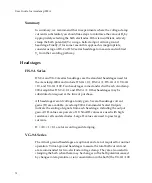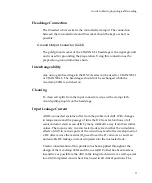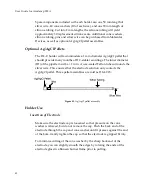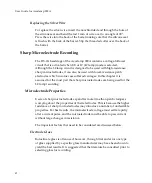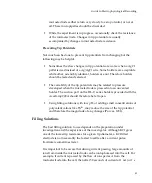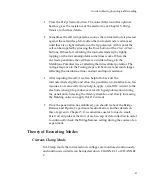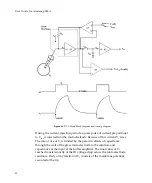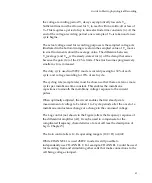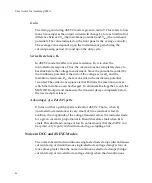
User
Guide
for
Axoclamp
900A
exposing
the
cells
to
the
air
unless
a
continuous
flow
of
solution
is
provided
across
or
through
the
preparation.
If
evaporation
is
a
problem,
try
floating
a
layer
of
mineral
oil
on
the
surface
of
the
solution.
If
used,
this
layer
of
oil
has
the
additional
advantage
of
automatically
coating
the
microelectrode
as
it
is
lowered
into
the
solution.
Precautions
must
be
taken
to
prevent
surface
tension
effects
from
drawing
a
thin
layer
of
solution
up
the
outer
wall
of
the
microelectrode.
If
this
film
of
saline
is
allowed
to
develop,
C
t
will
increase
substantially.
Because
the
film
of
saline
has
axial
resistance
the
contribution
to
C
t
will
be
very
nonlinear,
and
the
voltage
decay
after
a
current
pulse
will
either
be
biphasic
or
slow,
even
when
capacitance
neutralization
is
used.
To
prevent
the
saline
film
from
developing,
the
microelectrode
should
be
coated
with
a
hydrophobic
material.
This
can
be
done
just
before
use
by
dipping
the
filled
microelectrode
into
a
fluid
such
as
silicone
oil
or
mineral
oil.
Another
method
is
to
coat
the
microelectrode
with
Sylgard
#184
or
Q
‐
dope
(model
airplane
glue).
The
selected
material
should
be
painted
onto
the
electrode
to
within
100
μ
m
of
the
tip.
Tip
Potentials
During
the
passage
of
current,
a
slowly
changing
voltage
may
be
generated
at
the
tip
of
a
microelectrode.
Changes
in
this
tip
potential
are
indistinguishable
from
changes
in
the
membrane
potential
and
can
therefore
be
a
serious
source
of
error.
Identifying
Tip
Potentials
While
the
microelectrode
is
outside
the
cell,
press
the
Pipette
Offset
button
to
zero
the
offset.
In
IC
mode,
pass
a
constant
current
into
the
bath
for
about
10
seconds;
this
can
be
done
by
setting
a
Holding
current
in
the
Axoclamp
900A
Commander
and
checking
the
Holding
checkbox.
The
current
magnitude
should
be
the
same
as
the
maximum
sustained
current
likely
to
be
passed
during
the
experiment.
When
the
current
is
switched
off
the
recorded
potential
should
return
to
zero
within
a
few
milliseconds
at
most.
Some
84

